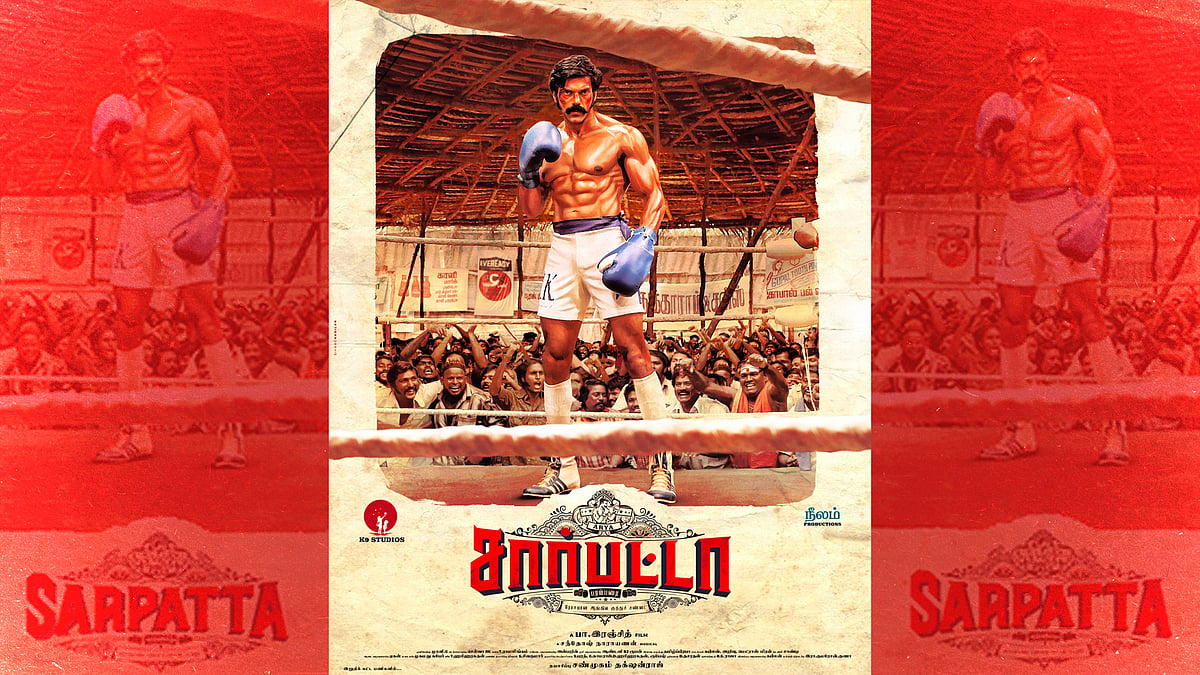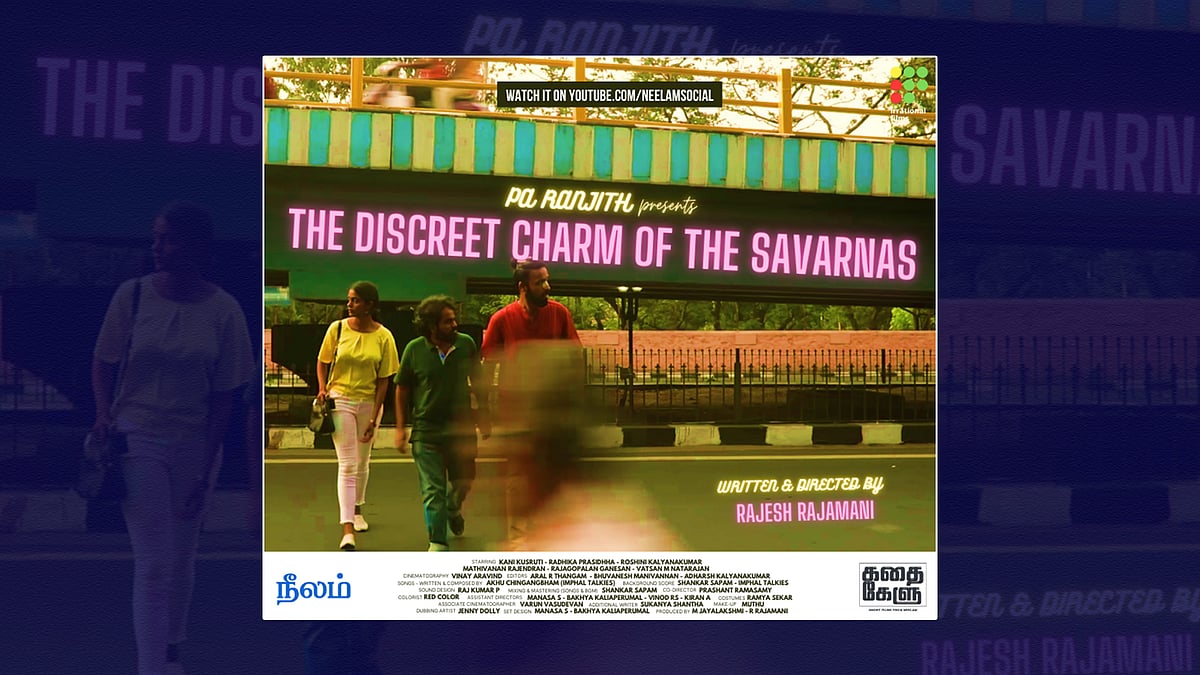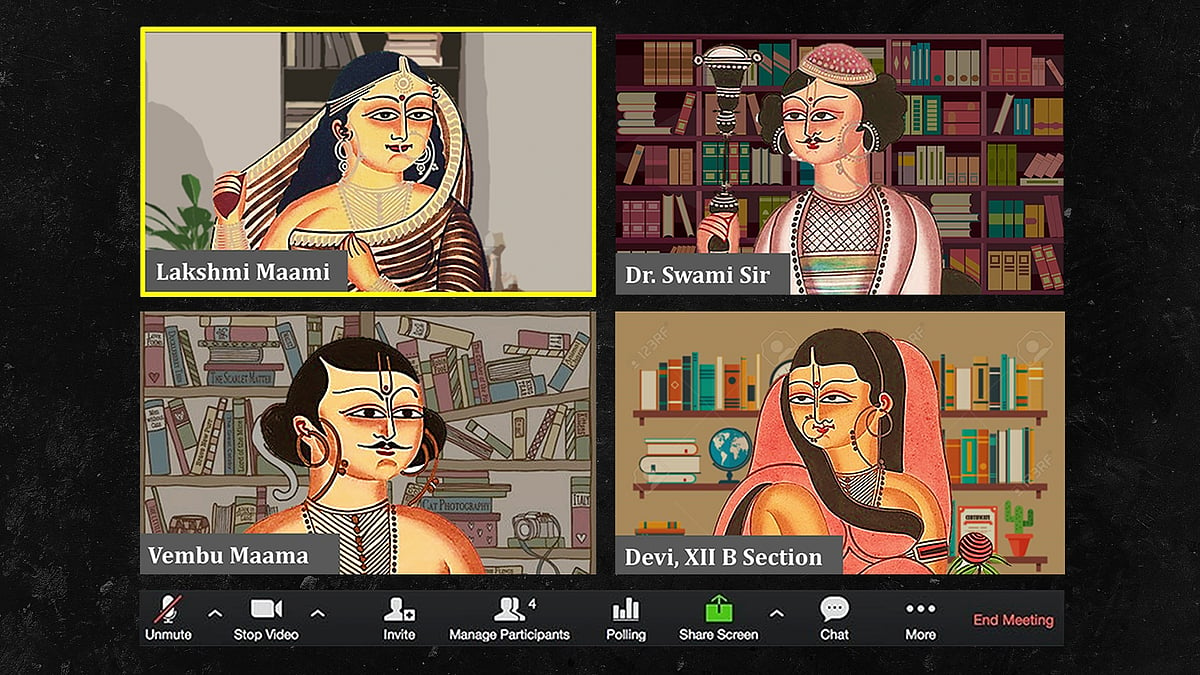Can Savarnas work with Bahujan artists without appropriating their heritage?
Rolling Stone India’s exclusion of Arivu from his own song offers some clues.
First of all, I have to tell you that this is not an outrage piece. Simply because we are still in a pandemic and the third Covid wave might appear anytime unannounced. So it is important for each one of us to conserve our energies. Therefore, there shall be no outrage. But if you are the type to ooze with nervous enthusiastic energy even after a Covishield dose and insist on outraging, then feel free to. Preferably on your own premises in isolation.
So Rolling Stone India’s August cover story, the cover itself rather, sent social media into a tizzy with people wondering why singer-lyricist Arivu was missing from it. The cover featured the faces of singer Dhee and Canadian musician and rapper Shan Vincent de Paul with the caption “How international Tamil artists Dhee and Shan Vincent de Paul are blurring local and global music boundaries, via record label and platform maajja”. Social media was ripe with questions about why Arivu, whose contribution was central to the success of the songs released so far through the maajja platform – Enjoy Enjaamai and Neeye Oli, along with Dhee and Shan, respectively – was missing from the cover.

The social media furore was heightened when filmmaker Pa Ranjith took to Twitter and questioned Rolling Stone India and maajja about Arivu’s glaring absence from the cover. This was then followed by Shan Vincent de Paul blaming Pa Ranjith in a series of posts (some deleted now) and a “diss track” (not deleted yet) for creating a divide among artists for his own “political agenda”. This was ironic because Shan’s song Neeye Oli became popular because of its iconic presence in Pa Ranjith’s 2021 film Sarpatta Parambarai and for how it merged the words of Gautama Buddha and Muhammad Ali, both central to the theme of the film.
But to be honest, the current heated debate didn’t just start with Rolling Stone India’s August edition. It had pretty much been simmering since maajja released the video of the song Enjoy Enjaami in March this year.
Risk of Brahmin-Bahujan collaboration
Enjoy Enjaami was an instant hit, crossing 321 million views as of today. But it also brought some discomfort and questions about how it was visualized and presented. The song, which evokes Arivu’s grandmother and talks about the unequal relationship between humans and our interrelation with nature, is essentially a Bahujan perspective and it is apparent that it stems from Arivu’s anti-caste politics. So, it puzzled everyone why the song was presented as “Dhee ft. Arivu”. Because although the song greatly benefits from Dhee’s unique and unconventional voice, its soul belongs to Arivu. This uneasiness in how the artists were credited was furthered by how the song was picturized.
The visual of the song is almost antithetical to the politics the lyrics represent. It reeks of feudal overtones where Dhee is seen sitting on a throne and mimicking rapper M.I.A, while Arivu is made to generically jump like Tarzan from an outdated Hollywood era. And it gets worse with Black Panther inspired imagery that seems to force fit a racial perspective of a caste society. Or probably the makers were only naively trying their best to appear “cool”, but clearly in vain.
But the song left everyone with some pertinent questions. Why is Arivu made to take the backstage in a song whose core has essentially come from him. And why is Dhee’s posturing in the song feudal and diluting the very radicalness of the song. Before we got any answers to these questions, French music producer DJ Snake remixed the song for Spotify in June and it was advertised on the iconic Times Square billboard with photos of him and Dhee. Arivu’s image was missing though his name was mentioned. Even Amul’s doodle on the song had the caption ‘‘Dhee Best Butter”, which was a wordplay on the singer’s name. But at least in this case, Arivu too appeared on the doodle.


However, maajja has now clarified that the song’s primary artist was Dhee and it was her choice to collaborate with Santhosh Narayanan and Arivu. But this clarification only brings more questions than answers. While it might be convenient to determine the primary artist of a song through such a technical allotment procedure, the reality is far more complex when Bahujan and Brahmin artists collaborate.
Bahujans share a rich sociopolitical and cultural history that runs into several centuries. This allows artists from Bahujan communities to tap into this vast history and produce their art for contemporary times. On the other hand, the history of Brahmins and other Savarnas is steeped in oppression and exploitation. Even their relationship with art has only been based on exclusion and purity. There is very little progressive or radical history that Brahmin artists can take advantage of to be relevant for today’s consumption. So it becomes important for Brahmin artists to borrow the radical history of Bahujans to make their art appealing.
This essentially is the case with Enjoy Enjaami too. While Dhee might be a talented singer, as a Brahmin artist she is forced to borrow from Bahujan cultural history (the oppari tradition in particular) through Arivu in order to create something that is both rooted and contemporary. Had the song not evoked Bahujan cultural history, it would have at best only been a catchy and easily hummable song. Its soul and depth without doubt comes from Arivu’s presence in it. Which is why Arivu’s absence in the magazine cover was puzzling when the cover story was titled “Back to the roots”. Because whose roots are they anyway? While maajja might stick to procedural and contractual explanations, it is easy for any listener to see who the primary artist of the song is.
In fact, in the Rolling Stone India cover story written by Anurag Tagat, he quotes London-bred Tamil-origin BBC broadcaster and film and music critic Ashanti Omkar who “points to artists like Raja Kumari and Vidya Vox who used some elements of Indian traditional art and culture and added it to a globally relevant style of music and visual representation”.
It is amusing that Raja Kumari and Vidya Vox are mentioned in this context. Because Raja Kumari alias Svetha Yallapragada Rao had come under severe criticism for her song (ahem) Roots that has the line “Untouchable with the Brahmin flow”. While Vidya Vox alias Vidya Iyer wasn’t critiqued as strongly, her song Thalaivi has Bahujan women holding parai drums as props in the background. In both these cases, we witness how Brahmin artists are trying hard to posture themselves as culturally rooted and radical, only for their attempts to evoke backlashes. Without Arivu playing a central role in Enjoy Enjaami, it is very probable that Dhee’s song too could fall under such a superficial category.

Rules of appropriation
Arviu’s sidelining from his own song has become a debate only because of his stardom. Since he is a much bigger star than Dhee or Shan Vincent de Paul, his exclusion has become very visible and difficult to ignore. So much so that the debate around the issue has forced Rolling Stone India to put Arivu on their digital cover for the month. But the risk of appropriation is much worse in other collaborative works between Brahmin and Bahujan artists, where the latter has little or no star power.
Music composer Santhosh Narayanan, who is Dhee’s stepfather, is a collaborator on both these songs and hasn’t yet spoken about the issue. But it has to be understood that Santhosh Narayanan’s presence is central to this ongoing conflict. Before these songs for maajja, he worked as a composer in all the films of Pa Ranjith and Mari Selvaraj. Both these filmmakers have tried to capture the lives of Dalits in their films and working with them has enabled Santhosh Narayanan to tap into Dalit and other Bahujan musical traditions. From gaana to matta gaana (sung at urban Bahujan funerals) to oppari (sung at rural Bahujan funerals) to other Bahujan folk forms, Santhosh has been able to collaborate with several grass root level artists through these films.
While there is absolutely no doubt about Santhosh Narayanan’s musical talent, there is a looming question about representation and appropriation. These Bahujan musical traditions have been handed down generations through collective community knowledge and, except a few, most of the artists remain nameless and faceless. But the musical traditions have been preserved collectively by the community.
However, when someone with the resources and network of Santhosh Narayanan taps into these traditions, he is able to take over these forms and, as a result, become synonymous with musical heritages that his own Brahminical history has been excluding and dismissing as lowly. While Santhosh Narayanan might be very well meaning as an individual, it still cannot prevent the appropriation he has been able to unleash on gaana and other Bahujan musical forms. And the credibility and access he has today was clearly made possible by his collaboration with Pa Ranjith, Mari Selvaraj and, to some extent, Arivu.
At the same time, one must acknowledge that Santhosh Narayanan has been able to present these Bahujan musical forms in a more sophisticated manner to a wider audience, thanks to his use of technology and other resources. On the other hand, this has erased the ownership that the nameless Bahujans originally had and which they unfortunately weren’t able to take to a wider audience because of their lack of resources and network.
Brahmin and other Savarna artists by their very access to abundant resources are able to easily appropriate Bahujan art forms even if they don’t intend to. Which essentially means that in any Brahmin and Bahujan collaboration, the Brahmin has a lot to gain and while some individual Bahujans may see some return, it is always a bigger loss to the Bahujan cultural heritage.
So it is important to not look at the conflict around representation and appropriation, as witnessed in the debate over the Rolling Stone cover, as a standalone event. But as a continuation of the problems that are faced when Brahmin and Bahujans artists collaborate.
Challenge of being a Bahujan artist
The music industry in Tamil Nadu continues to be dominated by Brahmins and other Savarnas – both as composers and singers. Amusingly, most non-Savarnas in the field seem to be Christians or have a Christian past. This points us to the exposure that these artists might have had during their growing years – either through Carnatic sabhas or the Church that later allows them to attempt a full-time career in music.
But the inherent challenge of a Bahujan artist lies in their lack of resources and platforms. This forces them to collaborate with Brahmin and Savarna artists who are able to bring in the required resources. But sooner or later, this leads us to issues of appropriation. To put it crudely, this is akin to appeasing and being extra accommodative of the kid who has the cricket bat because even if the others are better players, they can’t play without the bat.
The only way Bahujan artists can tread this problem is by creating platforms where Bahujans can collaborate with each other and grow without the fear of being invisibilized. The Casteless Collective founded by Pa Ranjith is one such platform. While the band has Dalit, other Bahujan, and even Brahmin artists, it remains primarily a Bahujan platform and allows them to flourish without having to feel side-lined. The Casteless Collective, however, is only a drop in the vast ocean. Unless there are several such Bahujan enabled platforms, these artists will be forced to collaborate with Brahmin and Savarna artists and the issue of representation and erasure may not go away.
 Sarpatta Parambarai: Pa Ranjith continues his quest to smash stereotypes
Sarpatta Parambarai: Pa Ranjith continues his quest to smash stereotypes
 The Discreet Charm of the Savarnas: Rajesh Rajamani shows an unflattering mirror to upper caste filmmakers
The Discreet Charm of the Savarnas: Rajesh Rajamani shows an unflattering mirror to upper caste filmmakers  'Those pork chops were made of soya’: When Tambrahms on Zoom toasted their very own Kamala Harris
'Those pork chops were made of soya’: When Tambrahms on Zoom toasted their very own Kamala Harris